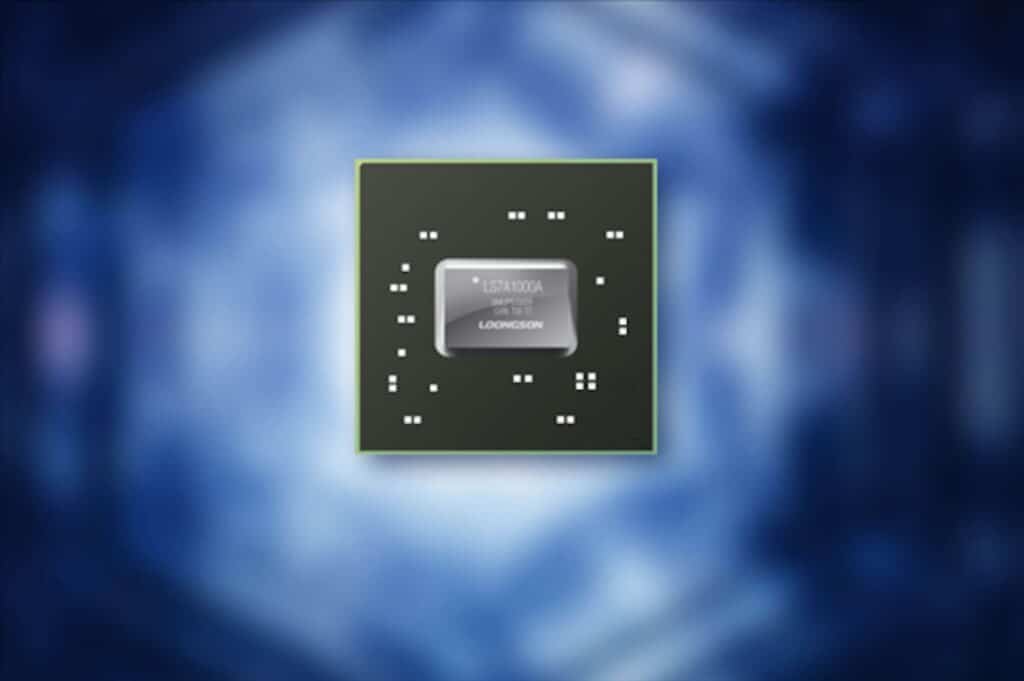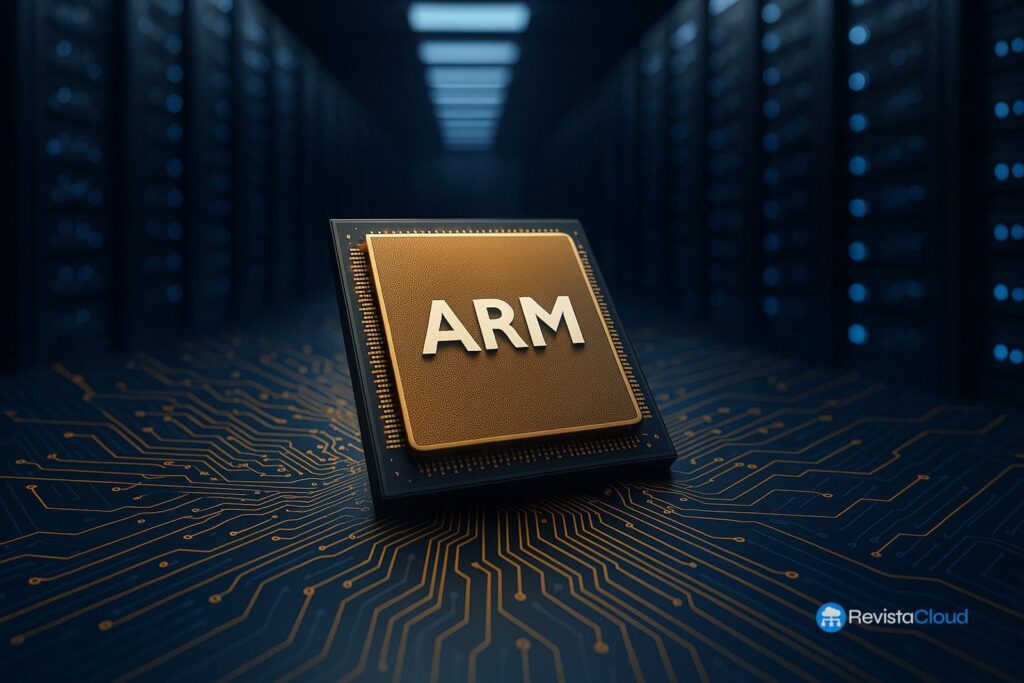The data forecast a server market that will reach $366 billion in 2025, driven mainly by demand for AI infrastructure. In this context, each architecture is betting on different strengths:
- Intel: Mature ecosystem, specialized accelerators, and legacy compatibility
- AMD: Raw performance, higher core density, and improved memory
- ARM: Energy efficiency and adoption by hyperscalers
- RISC-V: Design flexibility and royalty-free architecture
- Chinese Brands: Geopolitical independence and competitive costs
Convergence Toward Customization
An emerging pattern is the move toward customization. Major cloud providers are developing their own processors (Amazon Graviton, Google Axion, Microsoft Cobalt), while Chinese companies leverage RISC-V and proprietary architectures to create solutions tailored to their needs.
This trend toward “custom silicon” is fragmenting the market but also creating opportunities for more flexible architectures like RISC-V. “You can own your design in RISC-V in a way that you simply can’t with a licensed ISA,” explains an industry analyst.
Long-Term Implications
The current battle is shaping not only the present but the future of enterprise computing. Diversifying architectures reduces dependence on a single vendor but complicates software development and infrastructure management.
By 2030, we’re likely to see a truly multipolar market where no architecture dominates completely. Intel will maintain strength in traditional enterprise applications; AMD will continue gaining ground in raw performance; ARM will dominate energy efficiency; RISC-V will emerge in specialized applications; and Chinese brands will solidify their positions domestically and potentially in emerging markets.
The fight is far from over, but one thing is clear: the era of absolute dominance by a single company is over. The true winners are end users, benefiting from accelerated innovation, more diverse options, and the promise of more efficient, specialized technologies than ever before in the history of enterprise computing.
In this new multipolar era, the future belongs not just to those who create the fastest processor but to those who best adapt to an ecosystem where flexibility, energy efficiency, and geopolitical independence are as important as raw performance.
In the fast-paced world of data centers, where every processing cycle counts and each watt of energy translates into operational costs, an epic battle silently unfolds within millions of servers. Intel, the historic processor giant, faces four formidable rivals redefining the game: AMD with its EPYC processors, ARM with its revolutionary architecture, RISC-V as the open-source disruptor, and the emerging Chinese brands vying for technological independence.
AMD: The Classic Rival Reborn from Ashes
For years, AMD was seen as Intel’s “little brother” in the server market. That perception changed dramatically with the launch of its EPYC line. Like David against Goliath, AMD achieved the unthinkable: capturing significant market share from the dominant Intel.
AMD’s EPYC 9004 series (Genoa and Bergamo) has become a performance powerhouse, offering configurations up to 96 cores and 192 threads, with models of 128 cores optimized for cloud workloads. But numbers only tell part of the story. The real game-changer is Zen 4 architecture, delivering exceptional performance per watt.
“When I talk performance with clients, the first questions are about cores. In 2025, AMD EPYC is a beast,” explains a server infrastructure analyst. This core advantage enables higher virtualization density: a 96-core EPYC can host many more virtual machines per socket than a 60-core Xeon.
AMD also invests heavily in memory bandwidth. With 12 memory channels versus Intel’s 8, EPYC processors support greater bandwidth critical for high-density environments. AMD’s SEV (Secure Encrypted Virtualization) technology adds VM-level encryption, a feature Intel is still fully developing with its TDX.
In terms of market share, AMD has reached 27.2% of the x86 CPU market for servers, and in large data center models, EPYC processors hold an impressive 35.9% compared to Intel’s Xeon-SP, setting a new company record.
RISC-V: The Open-Source Revolution Promising Total Freedom
If ARM symbolizes an energy revolution, RISC-V stands as a philosophical one. Developed initially at the University of California, Berkeley, this open-source architecture is emerging as the third disruptive force, promising what no previous competitor did: complete design freedom without licensing restrictions.
The RISC-V SoC market hit $6.1 billion in 2023, a growth of 276.8% from 2022, and is projected to reach $92.7 billion by 2030. Numbers only tell part of the story. The real innovation is that RISC-V lets any company design custom processors without paying royalties or relying on proprietary architectures.
“RISC-V makes the most sense in novel applications, where a developer doesn’t already have an existing ARM product in place,” explains a specialist. Between 2024 and 2030, shipments based on RISC-V are expected to grow 50% annually, with 17 billion chips shipped in 2030 alone.
RISC-V’s appeal lies in its extreme flexibility. Unlike x86 or ARM, which confine developers to architectural limitations, RISC-V allows the creation of fully customized processors for specific tasks. Tech giants like NVIDIA have discreetly integrated RISC-V cores into GPUs and SoCs, aiming to ship a billion cores by the end of 2024.
The architecture is gaining traction in critical applications, such as NASA selecting SiFive RISC-V cores for high-performance space computing processors, proving RISC-V’s competitiveness even in demanding environments.
The Dragon Awakens: The Rise of Chinese Brands
The fourth player is perhaps the most intriguing: China, with its national brands seeking rapid technological independence. Under U.S. sanctions, Chinese companies have accelerated processor development, building a domestic industry with remarkable results.
Loongson: The National Champion
Loongson Technology is the banner carrier of Chinese processors. Its new 3E6000 with 64 cores offers performance comparable to Intel’s Xeon 8380 (Ice Lake architecture, 2019). Although still years behind the latest Intel and AMD offerings, progress is notable.
The 3C6000 uses China-developed LoongArch instruction set architecture, avoiding foreign licensed tech or supply chains—crucial for China’s ambition to reduce dependence on Western technologies.

The company isn’t stopping there. Loongson is already developing entirely new CPU architectures and cores, including the upcoming 3B6600, which reportedly will deliver performance akin to Intel’s Raptor Lake 13th/14th generation processors.
Alibaba: The RISC-V Giant
Through its DAMO Academy, Alibaba has made a bold RISC-V move. Its XuanTie C930 processor, designed for high-performance servers, is the company’s first fully in-house CPU.
The C930 is a multicore 64-bit processor with out-of-order superscalar execution and a 16-stage pipeline, compatible with the RISC-V RVA23 profile. Compatibility here is key, as it includes essential hypervisor extensions for deployment in servers and cloud.
Alibaba’s strategy is ambitious: planning to invest over 380 billion yuan ($52 billion) in AI and cloud infrastructure over the next three years, with C930 as a centerpiece.
XiangShan: China’s World-Class RISC-V
China is also backing RISC-V at the institutional level. The XiangShan project by the Chinese Academy of Sciences aims to deliver a high-performance RISC-V processor by 2025. Leveraging the open-source Mulan PSL-2.0 license, anyone can adopt its design.
Started in 2020, Chinese researchers are developing the XiangShan family. The K100 design is open source, allowing widespread adoption.
ARM: The Silent Disruptor from Outside
If AMD epitomizes the evolution of x86 competition, ARM represents an entirely new revolution. Traditionally associated with mobile devices, ARM has stormed the server segment with an irresistible value proposition: superior energy efficiency.
ARM Holdings aims to capture 50% of the data center CPU market by 2025, a leap from 15% in 2024. This projection relies on the explosive growth of AI-focused servers, where ARM chips act as “traffic controllers” for AI workloads.

Notable use cases include NVIDIA’s Grace CPU, based on ARM, paired with its Blackwell AI processors. AWS already deploys over 2 million custom Graviton chips, and companies like Microsoft and Google have developed their own ARM processors: Cobalt 100 and Axion.
The key advantage: low power consumption. As data centers consume vast amounts of electricity—especially those dedicated to AI—efficiency isn’t just a benefit but a necessity.
“AWS alone will deploy over 1.2 million ARM CPUs this year,” industry analysts estimate. Conservative forecasts suggest that ARM-based servers will represent 20-23% of the global market by 2025, impressive even if below initial expectations.
Impact on Industry: A New Multipolar Era
This quadruple competition is transforming the server landscape. Intel, which held near-absolute dominance for decades, now faces pressure on multiple fronts. It is preparing its response with Clearwater Forest, a new family of server CPUs built on Intel’s 18A process, featuring for the first time a 3D cache technology called “Local Cache.”
For enterprise consumers, this multipolar reality offers tangible benefits but also more complex decisions. Organizations can choose from:
- Mature x86 ecosystems (Intel and AMD) with broad software support
- ARM’s energy efficiency tailored for specific workloads
- Total flexibility of RISC-V for custom applications
- Chinese solutions promising geopolitical independence at potential performance trade-offs
The Geopolitics of Processors
Adding a geopolitical layer, U.S. export restrictions have paradoxically accelerated Chinese innovation, fostering a parallel tech ecosystem that could eventually match Western offerings.
China’s multifaceted strategy includes developing proprietary architectures like LoongArch, heavily investing in RISC-V as an open-source alternative, and forging strategic alliances among leading tech firms. The Chinese government promotes widespread RISC-V adoption at a national scale, signaling a strategic shift toward technology that can’t be sanctioned externally.

